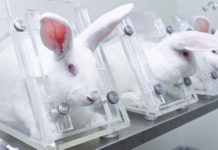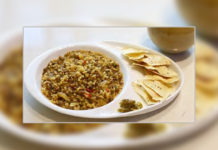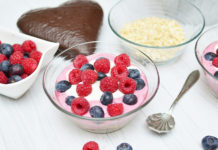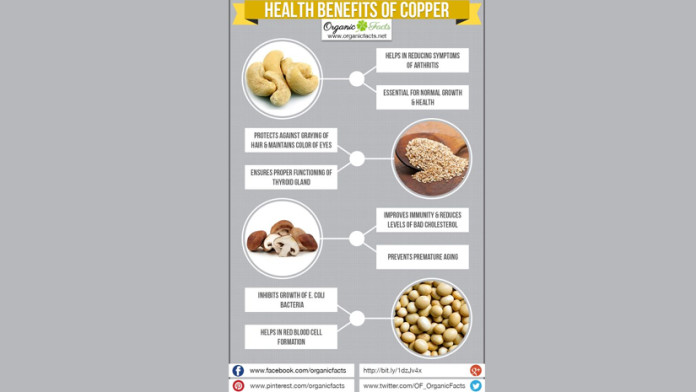Copper is an essential mineral and plays a vital role in our diet; the need for copper begins with fetal development and continues through the many stages of life. Use of copper in history is found to be about 10,000 years ago. In 3000 B.C., copper ores were found in the island of Cyprus and Romans named the metal as cyprium which was later known as cuprum in Scientific language and then copper in English.
 In about 2600 B.C., copper was used to sterilize drinking water in India and is still used in many homes for storing water. Egyptians recommended copper and it’s compounds for headaches, burns, wounds, and boils, similarly, Greeks used it for treatment of ulcers and healing wounds. In the 20th century, a German physician observed that copper mine workers were free from Arthritis. Human body cannot make copper by itself, so it must be obtained from diet, drinking water and, in some rare cases, supplements.
In about 2600 B.C., copper was used to sterilize drinking water in India and is still used in many homes for storing water. Egyptians recommended copper and it’s compounds for headaches, burns, wounds, and boils, similarly, Greeks used it for treatment of ulcers and healing wounds. In the 20th century, a German physician observed that copper mine workers were free from Arthritis. Human body cannot make copper by itself, so it must be obtained from diet, drinking water and, in some rare cases, supplements.
 Copper aids the human body in :
Copper aids the human body in :
Blood vessel formation

Skin elasticity

Maintains a healthy heart

Stabilizes the connective tissue

Brain development

Copper Deficiency Symptoms:
Anaemia

Low body temperature

Brittle bones

Osteoporosis

Dilated veins

Low white blood cell count

Uneven heartbeat

Elevated cholesterol levels

Low resistance to infections

Birth defects

Sources of Copper in Foods:

Copper is present in various food sources including liver, meat, seafood, beans, whole grains, soy flour, wheat bran, almonds, avocados, barley, garlic, nuts, oats, blackstrap molasses, beets and lentils.

Copper also enters the human body through drinking water in copper glasses or jugs and by using copper cookware. Oysters are the richest sources of copper in nature.

By: Archa Dave




























